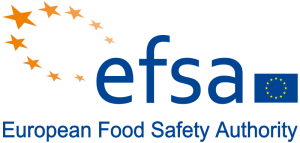New Food Enzyme Exposure Tool Paves Way For Evaluations

EFSA scientists have devised a way to more accurately estimate consumer exposure to enzymes used in food production, improving their safety evaluation as required by EU law. Use of the new approach in four newly published scientific opinions paves the way for the evaluation of the remaining 300 applications.
Dr Christina Tlustos, an exposure expert who sits on EFSA’s Panel on Food Contact Materials, Enzymes, Flavourings and Processing Aids (CEF), which developed the approach, comments: “We have developed an exposure tool which can be tailored to each food process involving food enzymes. The tool uses technical conversion factors, which means we can combine food consumption data with enzyme use levels and take into account the level of transfer of food enzymes into food products.”
 Prof Karl-Heinz Engel, the chair of the food enzymes working group and a CEF Panel member, says: “The experts on the working group decided which technical input data to use. During the development of the tool stakeholders provided some useful insights and additional data. By harmonising both food enzyme use levels and food consumption data we can estimate consumer exposure to these substances much more accurately than before.”
Prof Karl-Heinz Engel, the chair of the food enzymes working group and a CEF Panel member, says: “The experts on the working group decided which technical input data to use. During the development of the tool stakeholders provided some useful insights and additional data. By harmonising both food enzyme use levels and food consumption data we can estimate consumer exposure to these substances much more accurately than before.”
The same methodology will be applied to all remaining food enzymes applications scheduled for assessment by EFSA.
Enzymes are protein molecules that catalyse chemical reactions. They have been used in the production of foods such as bread and beer for centuries.
Historically enzymes are considered to be non-toxic and not a safety concern for consumers since they are produced naturally by living organisms and present in ingredients used to make food. However, today’s foods are also made using food enzymes produced industrially. These enzymes are extracted from plant and animal tissues or produced by fermentation of microorganisms.

































